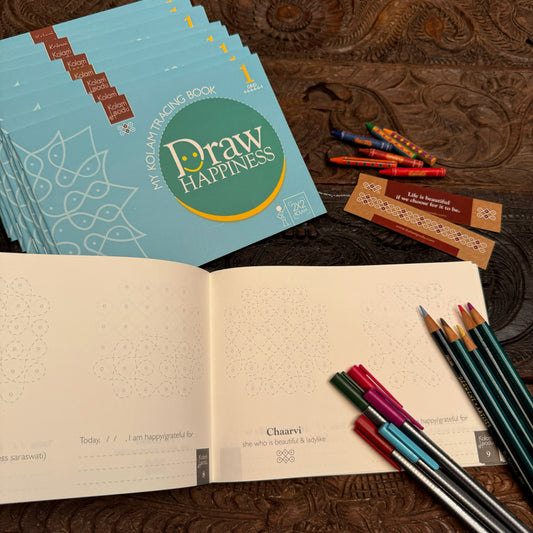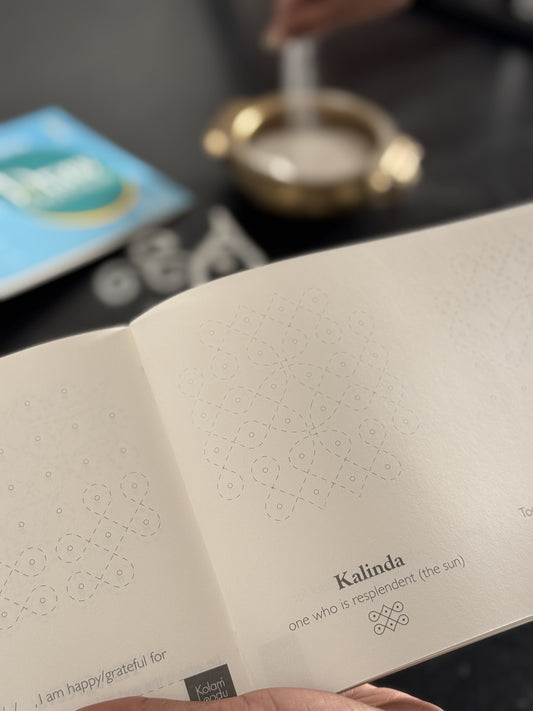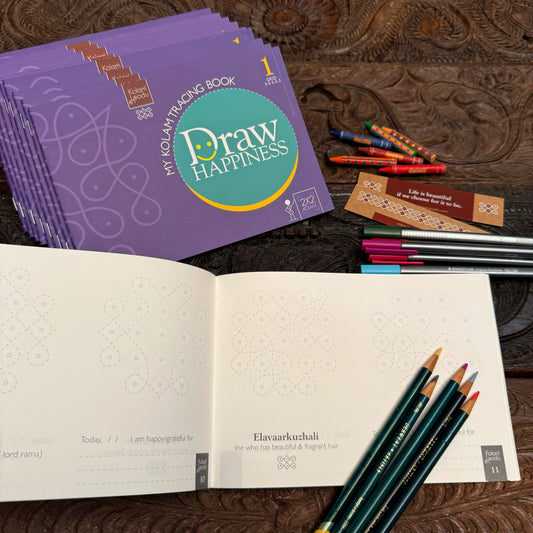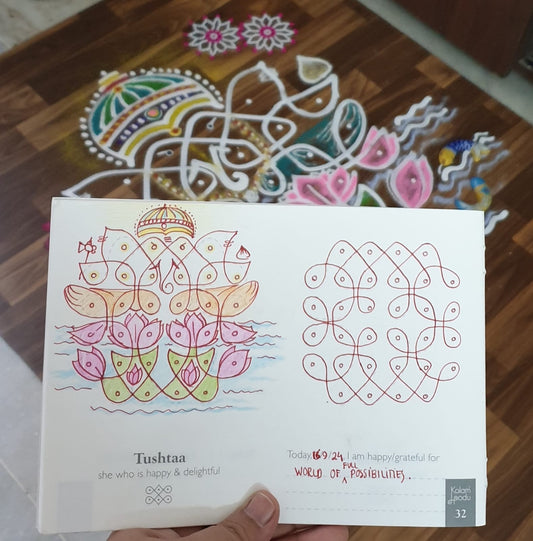Explore the profound symbolism within Kolam, a traditional art form with deep cultural and spiritual roots. Kolams invite positivity and blessings, embody sacred geometry, and pay homage to nature's beauty. They incorporate traditional motifs, remind us of life's impermanence, and serve as ritualistic offerings to deities. Kolams are a cultural treasure, reflecting identity, tradition, and a connection to the divine, all drawn with the intention to embrace the beauty of life.
Kolam holds various symbolic meanings that reflect cultural beliefs, spiritual concepts, and aesthetic expressions. Here are some common symbolisms associated with kolam:
1. Auspiciousness and Inviting Positivity: Kolams are considered to be auspicious and are believed to invite positive energies and blessings into the household. The act of drawing a simple kolam symbolizes the welcoming of prosperity, good luck, and well-being.
2. Sacred Geometry and Cosmic Order: The intricate geometric patterns found in kolams represent the harmony and order of the universe. They often incorporate geometric shapes, symmetry, and mathematical precision, symbolizing the cosmic balance and interconnectedness of all things.
3. Nature and Natural Elements: Historically, kolam designs draw inspiration from nature, featuring floral motifs, birds, animals, or elements such as the sun, moon, and stars. Colours and textures used to enhance a simple kolam were typically from natural elements such as flowers, leaves, and extracts from them. These symbols reflect a reverence for the natural world and its inherent beauty, reminding us of our connection to the environment. Drawing traditional kolams using rice flour in our culture continues to be practiced with this intention.
4. Religious and Spiritual Symbols: Kolams may incorporate religious symbols and motifs, representing devotion and invoking divine blessings. Common symbols include lotus flowers, sacred footprints (paadam/ paduka), deities' forms, holy symbols (like Om or Swastika), and other elements associated with Indian mythology and spirituality.
5. Transience and Impermanence: Kolams are ephemeral in nature, as they are often drawn using materials like rice flour or powders that naturally fade away over time or are erased. This impermanence symbolizes the transient nature of life and teaches us to appreciate the beauty of the present moment.
6. Ritualistic and Devotional Significance: Kolam-making is often performed as a ritualistic practice, particularly as an offering to deities. It represents devotion, piety, and a connection to the divine. Creating kolams is seen as a form of worship and a way to invite divine presence into the home.
7. Cultural Identity and Tradition: Kolams are deeply embedded in South Indian cultural identity and serve as a visual expression of cultural heritage. Kolam in Tamil Nadu is muggulu in Andhra Pradesh and Telangana, rangoli in Maharashtra, hase and rangavali in Karnataka, alopana in Bengal, to name a few. The patterns and designs found in kolams reflect regional styles, community-specific aesthetics, and the preservation of traditional artistic practices.
These symbolisms in kolam reflect the values, beliefs, and aesthetics of the communities that practice them. They convey spiritual devotion, cultural pride, an appreciation for nature's beauty, and an understanding of the interconnectedness of all things in the universe.
Life is beautiful if we choose for it to be. Let's draw happiness !







